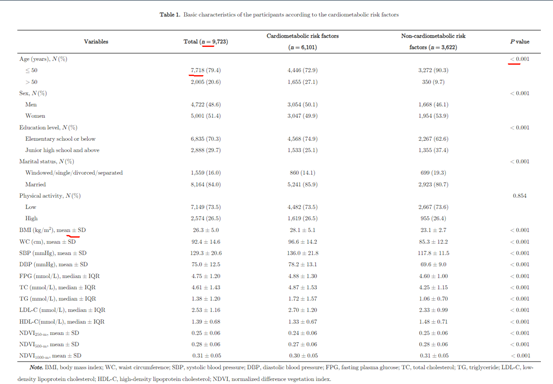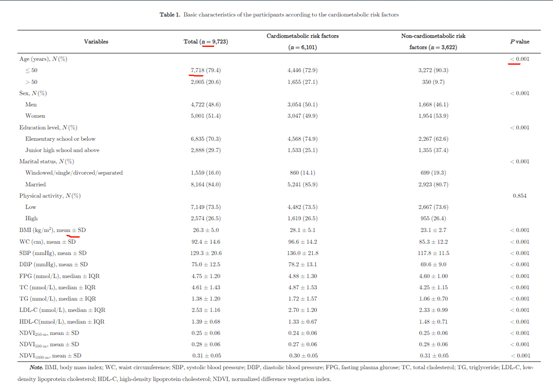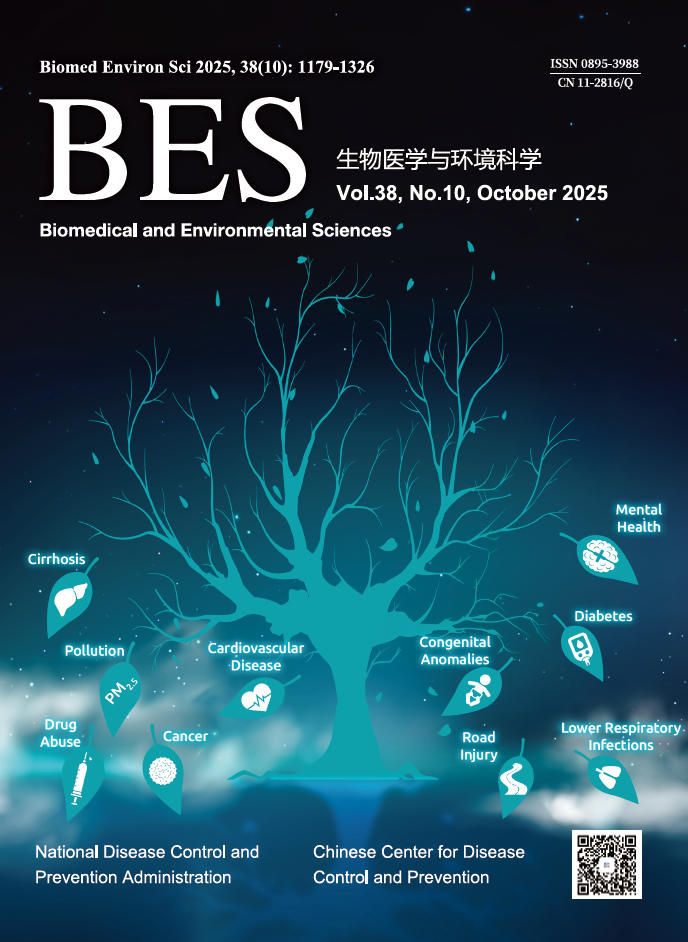Manuscript Editing Requirements
After the manuscript has passed peer review, the following aspects need to be further refined before publication.
1. Title Requirements
1.1 Article Title
Capitalize the first letter of each content word in the article title.
Example: Impact of Smoke-free Legislation on Acute Myocardial Infarction and Subtypes of Stroke Incidence in Shenzhen, China, 2012–2016: An Interrupted Time Series Analysis
1.2 Running Title
The running title should be placed in the header. It should contain no more than 10 words, and the first letter of the first word must be capitalized.
2. Author and Affiliation Requirements
2.1 Font
The font should be Times New Roman.
2.2 Author Name Format
For the author’s name, the given name comes first and the surname follows. Capitalize the first letter of the surname and the first letter of the given name (the two character given names should be connected). Mark the corresponding author with a “#” (superscript) after their name. For co-first authors, add a “&” (superscript) after their names. The affiliation numbers corresponding to the authors should be in superscript, with no space between the author’s name and the number. When there are multiple affiliation numbers, separate them with commas (in English font, half-width) and without any space.
Example: Yongbin Zhu1,&, Renzhang Liang2,&, Lining Pu1, Huihui Wang1, Xiaoxue He1, Degong Pan1, Xue Zhang1, Yueping Wu1, Yanrong Wang1, Liping Shi1, Yue Yang1, and Jiangping Li1,3,#
2.3 Affiliation Details
The author’s affiliation should include the department, the institution name, the city, the postal code, the province/municipality directly under the central government/autonomous region, and the country. Insert a space between the city and the postal code. Arrange the affiliation numbers in the order in which the authors’ names appear.
Example:
1. Department of Epidemiology and Health Statistics, School of Public Health, Ningxia Medical University, Yinchuan 750004, Ningxia, China; 2. Department of Pediatric Surgery, Peking University First Hospital Ningxia Women and Children's Hospital (Ningxia Hui Autonomous Region Maternal and Child Health Hospital, China), Yinchuan 750004, Ningxia, China; 3. Key Laboratory of Environmental Factors and Chronic Disease Control, Ningxia Medical University, Yinchuan 750004, Ningxia, China
3. Abstract and Keywords Requirements
3.1 Abstract
For articles in the “Original Article” category, divide the abstract into four parts: “Objective”, “Methods”, “Results”, and “Conclusion”, with approximately 250 words.
For articles in the “Review” category, the abstract should be unstructured.
3.2 Keywords
Select 3-8 keywords. Only the first letter of the first word in each keyword should be capitalized. Separate keywords with semicolons. Whenever possible, choose MeSH (Medical Subject Headings) terms.
Example:
Key words: Repellents; Oil removers; Respiratory disease; Older adults; CLHLS
4. Format of the Footnote
4.1 Corresponding Author Information
Include the telephone number and email address of the corresponding author.
Example: #Correspondence should be addressed to Gang Huang, PhD, Tel: XXX, E - mail: XXX@mail.ac.cn
4.2 First Author Biography
The biographical note of the first author should contain educational background or professional title, main research direction, and email address. For co-first authors, mark “*These authors contributed equally to this work”. Provide the biographical information of all co-first authors.
Example:
Biographical notes of the first authors: Hongyi Zhang, PhD, majoring in cardiovascular diseases, disease prevention, epidemiology, E-mail: XXX@foxmail.com; Jia Wang, majoring in epidemiology, health statistics, social medicine, E-mail: XXX@mail.ac.cn
5. Format Requirements of the Main Text
5.1 Font
The font of the main text is Calibri.
5.2 Title Requirements for Original Articles and Review Articles
a. The first-level title should be in bold and all capital letters on a single line, e.g., “INTRODUCTION”.
b. The second-level title should be in italics and bold, with the first letter of each content word capitalized, and on a single line, e.g., “Study Design and Participants”.
c. The third-level title should be in italics and bold, with the first letter of each content word capitalized, starting from the left margin and running together with the text.
d. The fourth-level title should be in italics, with the first letter of each content word capitalized. Indent two spaces at the beginning of the paragraph and run it together with the text.
5.3 Title Format for Articles in Other Categories (Letter, Policy Forum, Commentary, etc.)
Use italics, non-bold, and capitalize the first letter of each content word. Place it at the left margin and run it together with the text.
5.4 Reference Numbers in the Main Text
a. Arrange the reference numbers in the order of their appearance in the main text.
b. The reference labels should be in square brackets as superscripts. When there are multiple labels, separate them with commas without any space. For consecutive numbers more than 3, use the range symbol “–” in the middle.
c. Remove the space between the reference label and the main text.
Examples: reproductive toxicity[1]; reproductive toxicity[1-3]; reproductive toxicity[1,2,7].
5.5 Requirements for “Data, Units, Statistical Symbols, etc.” in the Main Text
a. M should be mol/L.
b. Use a lowercase “k” in “kD”.
c. Use uppercase “L” for liter.
d. Statistical symbols should be in uppercase italics, such as “P”, “CI”, “OR”, “RR”, “P25”, “P75”, etc.
e. Gene names should be in italics, and protein names should be in regular font.
f. Add spaces before and after symbols such as “>”, “=”, “<”.
g. Add a space between numbers and units.
h. There should be no space between the percentage sign and the value, and add % before and after the numbers representing the range, e.g., 10%–11%.
i. The number of decimal places for similar data should be unified, especially in tables.
j. Represent numbers in scientific notation as “m × 10n”, e.g., “3.33 × 105”.
k. Use the endash “–” (not the hyphen “-”) to indicate the data range, e.g., 2.23–5.67.
l. When referring to figures, tables, and formulas in the main text, use the full spelling plus the serial number, such as “Figure 1, Table 1, Equation 1”, in the order of appearance.
For attached figures, attached tables, and other attachments mentioned in the main text, use “Supplementary Figure S1, Supplementary Table S1, etc.”, according to the order of appearance.
5.6 Figures in the Main Text
a. The author must provide vector graphics. All lines, texts, anchor points, fills, etc., within the vector graphics can be individually selected and modified in drawing software such as Adobe Illustrator (AI) or CorelDRAW (CDR). Common formats include emf, ai, eps, excel, opj, wmf, pdf, cdr, etc. Commonly used statistical software can export these formats. If the statistical charts are created using common software like Visio, Excel, or PowerPoint (PPT), directly provide the source file. Do not submit files in formats that are not editable in terms of text, such as tif, tiff, jpg, png, or converted pdf.
b. The text and data formats in the figure should be consistent with those in the main text.
c. The figure title should be followed by the figure caption without starting a new line. Do not add “Note” before the figure caption content. All abbreviations in the figure must be marked with their full names in the figure caption, e.g., “BMI, body mass index”. For all maps (except hand-drawn schematic diagrams), the map review number must be indicated in the figure caption.
5.7 Tables in the Main Text
a. All tables (including attached tables) should use a three-line table format, with the Calibri font.
b. The table title “Table 1” should be in bold, with the first letter of the first word capitalized in the title and no full stop at the end.
c. The table header should be complete without missing items, and the first row should be in bold.
d. The content in the table body should be in non-bold unless otherwise noted. For values with more than 3 digits, add a thousands separator (e.g., 49,123). Add spaces before and after symbols such as “≥”, “≤”, “>”, “<”, “=”, and “±”. Use English/half-width font for parentheses and add a space between the parentheses and the word.
e. Add “Note.” in bold and italics before the table note.
f. The data in the table should have clear units and representation methods, such as BMI (kg/m2), mean ± SD. If the data in the table are represented in the same way, it can be stated in the “Note.”, e.g., “Data were represented as mean ± SD / n (%) / median (IQR: P25, P75)”; all abbreviations in the table must be marked with their full names in the form of figure captions, such as “BMI, body mass index”.
Example:

6. Format Requirements for the Supplementary Materials
The format requirements for the figures and tables in the attachment are consistent with those in the main text. Please keep the number of figures and tables to a minimum.
BES稿件编辑加工要求
稿件通过同行评议后,在发表前需进一步完善以下方面:
1. 标题要求
(1) 文章标题,实词首字母大写
Sample: Impact of Smoke-free Legislation on Acute Myocardial Infarction and Subtypes of Stroke Incidence in Shenzhen, China, 2012–2016: An Interrupted Time Series Analysis
(2) running title:放于页眉位置,10个单词以内,第一个单词的首字母大写。
2. 作者及单位要求
(1) 字体为Times New Roman
(2) 作者名前姓后顺序,姓首字母大写,名第一个字母大写(两个字的拼音相连)。通讯作者名字后面加#(上标)标识。有共同第一作者的用*(上标)在作者名字后面标识。作者对应的单位序号要上标,且与作者名字之间无空格,多个单位序号之间用逗号(英文字体/半角)隔开且中间无空格。
Sample: Yongbin Zhu1,*, Renzhang Liang2,*, Lining Pu1, Huihui Wang1, Xiaoxue He1, Degong Pan1, Xue Zhang1,Yueping Wu1, Yanrong Wang1, Liping Shi1, Yue Yang1, andJiangping Li1,3,#
(3) 作者单位应包括部门,单位名称,城市,邮编,省/直辖市/自治区,国家,其中城市与邮编之间用空格间隔。单位序号要按照作者名字的出现的顺序依次排序。
Sample: 1. Department of Epidemiology and Health Statistics, School of public health, Ningxia Medical University, Yinchuan750004, Ningxia, China; 2. Department of Pediatric Surgery, Ningxia Women and Children's Hospital, Yinchuan750004, Ningxia, China; 3. Key Laboratory of Environmental Factors and Chronic Disease Control, Ningxia Medical University, Yinchuan 750004, Ningxia, China
3. 摘要及关键词要求
(1) 摘要:栏目为Original Article 的文章,摘要分为四部分Objective、Methods、Results, and Conclusion. 250字左右;栏目为Review的文章,摘要为非结构化摘要。
(2) 关键词: 3-8个。每个关键词仅第一个词的首字母大写。关键词之间用分号。尽量选择Mesh词。
Sample: Key words: Repellents; Oil removers; Respiratory disease; Older adults; CLHLS
4. 文章首页脚注内容格式
(1) 通讯作者信息包括电话、电子邮箱等
Sample: #Correspondence should be addressed to Gang Huang, PhD, Tel: XXX, E-mail: XXX@mail.ac.cn
(2) 第一作者简介需要“学历或职称、主要研究方向、电话、电子邮箱”等内容。有共同第一作者的需标示* These authors contributed equally to this work. 需要列出所有第一作者的简介信息。
Sample: Biographical notes of the first authors: Hongyi Zhang, PhD, majoring in cardiovascular diseases,disease prevention, epidemiology, Tel: XXX, Email:XXX@foxmail.com; Jia Wang, majoring in epidemiology, health statistics, socialmedicine, Tel: XXX, Email:XXX@mail.ac.cn
5. 正文的格式要求
正文字体为Calibri
(1)栏目为Original Article、Review的文章正文中的标题要求:
a. 一级标题单独一行粗体全大写:INTRODUCTION
b. 二级标题单独一行斜体、粗体实词首字母大写:Study Design and Participants
c. 三级标题斜体、粗体实词首字母大写。顶格放,与正文接排。
d. 四级标题斜体、实词首字母大写。段首前空两格,与正文接排。
(2)栏目为Letter、Policy Forum、Comentary等其他栏目的文章正文中标题格式:斜体、非粗体、实词首字母大写。左顶格,与正文接排。
(3)正文中的参考文献序号:
a. 参考文献序号按照在正文出现的顺序依次排序。
b. 参考文献标号为加中括号上标,多个需要用逗号隔开且中间无空格,大于3个的连续序号中间用范围号“–”。
c. 删除参考文献标号和正文之间的空格。
Sample: reproductive toxicity[1].reproductive toxicity[1-3].reproductive toxicity[1,2,7].
(4)正文中数据、单位、统计符号等要求:
a. M应mol/L;
b. kD中k为小写;
c. 升L用大写;
d. 统计符号P、CI、OR、RR、P25、P75等为大写斜体;
e. 基因名称斜体,蛋白质名称正体;
f. >、=、<等符号前后添加空格。
g. 数字与单位之间加空格。
h. 百分号和数值之间无空格,且表示范围的的数字前后都需要加%,如10%–11%。
i. 同类数据小数点位数统一,特别在表格中。
j. 用科学记数法表示的数字,用m×10n表示,如3.33×105。
k. 表示数据范围的符号为endash“–”,不是连字符hyphen“-”,如2.23–5.67。
l. 正文中提到图、表、公式时,用全拼加序号表示,如Figure 1,Table 1,Equation 1,按照顺序依次出现。
m. 正文中提到的附图、附表和其他附件,分别用Supplementary Figure S1、Supplementary Table S1,按出现顺序编号。
(5) 正文中的图
a. 作者须提供矢量图。矢量图里包含的所有线条、文字、锚点、填充等都可以在ai或cdr等绘图软件中,单独选中并修改。常用的格式有emf,ai,eps,excel,opj,wmf,pdf,cdr等。通常用的统计软件都可以导出以上格式。如果用visio,excel,ppt等常用软件做的统计图,可直接提供源文件。不要提供tif、tiff、jpg、png、转曲过的pdf这种无法编辑文字格式的文件。
b. 图中文字和数据格式同正文。
c. 图题接排图注,无须另起一行。图注内容前面不加“Note”。图中出现的缩写均需在图注中标明全称,如BMI, body mass index;所有地图(除手绘示意图)需在图注中注明审图号。
(6)正文中的表格
a. 所有表格(包括附表)均采用三线表,字体Calibri
b. 表题Table 1粗体,题目第一个单词的首字母大写,末尾不加句号。
c. 表头完整不缺项,第一行粗体。
d. 表身中的内容,无特殊注释说明,全部用非粗体。3位以上的数值需添加三分位间隔符(如:49,123);≥、≤、>、<、=以及±号前后加空格;括号用英文/半角字体,且与括号前单词之间加空格。
e. 表注前面加上“Note.”粗体,斜体。
f. 表格中的数据需要明确单位和表示方式,如BMI (kg/m2), mean±SD,如果全表数据表示方式一致,可以在Note中说明,如Data were represented as mean±SD / n(%) / median (IQR: P25, P75); 所有表中出现的缩写均需以图注的形式标明全称,如,BMI, body mass index.
Sample:

6. 附件的格式要求
附件中的图表格式要求与正文中的图表格式要求一致。图表数量尽量精简。




















 Quick Links
Quick Links